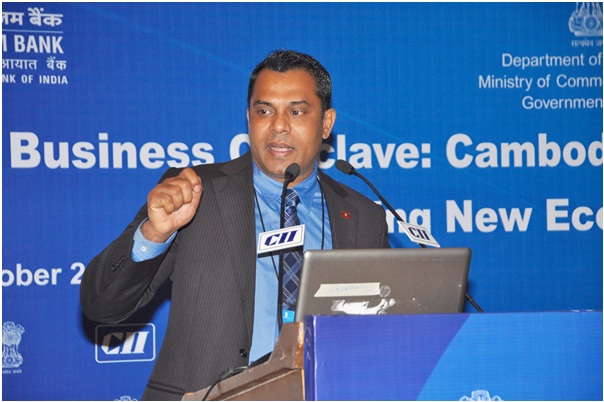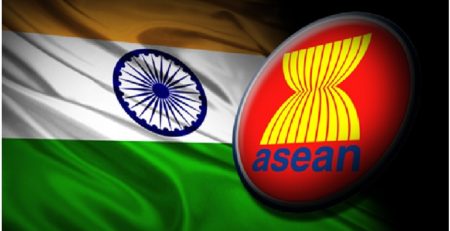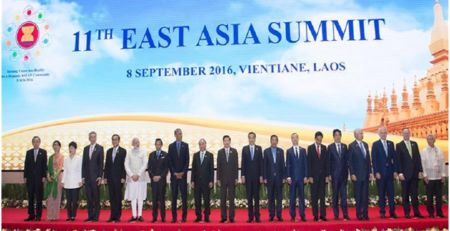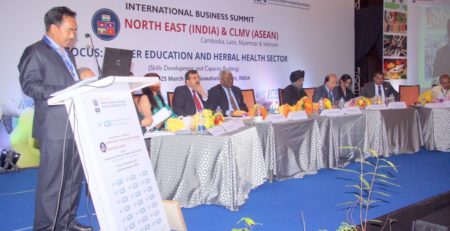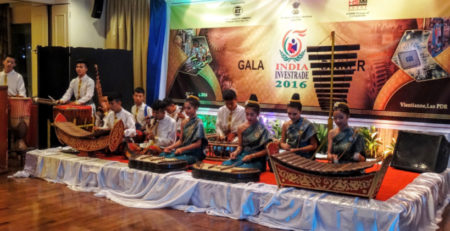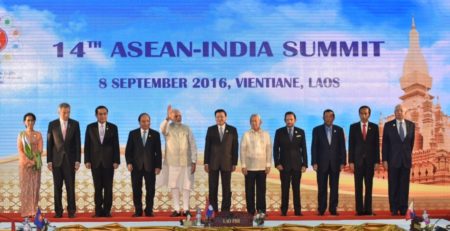CLMV and India Bilateral Trade
Cambodia, Lao People’s Democratic Republic (Lao PDR or Laos), Myanmar and Vietnam, collectively called ‘CLMV’, are an integral part of the Association of South East Asian Nations (ASEAN) region, covering 32 percent of its geographical area and account for around 9% of ASEAN’s gross domestic profit.
CLMV forms the third largest economy in ASEAN, followed by Indonesia and Thailand. Due to close proximity with these countries, India is looking to boost trade and investment with the region as part of the “Act East Policy”.
These countries have been undergoing a transition from central planning to market economies. CLMV nations are considered among the fastest growing economies in the region. They are primarily agrarian, and have enjoyed a certain degree of macroeconomic stability in recent years. These economies are endowed with abundant natural resources and low-cost work force.
Finance Minister Arun Jaitley, in his budget speech of 2015, had stated that “The Act East Policy of the Government of India endeavours to cultivate extensive economic and strategic relations in South-East Asia. In order to catalyze investments from the Indian private sector in this region, a Project Development Company will, through separate Special Purpose Vehicles, set up manufacturing hubs in CLMV countries, namely, Cambodia, Myanmar, Laos and Vietnam.”
Commerce and Industry Minister Nirmala Sitharaman, in her inaugural speech at the 4th India – CLMV Business Conclave, 2017 in Jaipur, expressed hope that India will be able to partner in more trade initiatives with these countries to develop a strong India-CLMV vertical within the ASEAN market. India’s trade with Cambodia, Laos, Myanmar and Vietnam has already spiked to 10 billion USD from USD 1.5 billion in the last 10 years.
With tri-lateral highway, connectivity in the North East, port connectivity improvement and the Act East Policy, there is immense possibility to further extend the trade association. The External Affairs study proves that there is a huge potential of about 100 billion USD dollars of additional export.
The adoption of “Look East Policy” by India in the year 1992 was an initiative towards developing extensive economic and strategic relations with the ASEAN nations (including CLMV countries). Since then India has progressed from a dialogue partner to the present status of a strategic partner in the ASEAN bloc. There has been massive trade expansion due to the intensified economic engagement.
India’s exports to the CLMV countries mainly comprises pharmaceuticals; machinery and instruments; vehicles other than railway; plastics and articles thereof, and cotton. On the other hand, India’s key imports from the region include rubber and articles, wood and articles of wood, ores, slag and ash, mineral fuels, oils and distillation products, and coffee, tea and spices. India’s approved direct investments in joint ventures and wholly owned subsidiaries in the CLMV countries amounted to US$ 40.9 million during 2013-14.
As per official statistics of the Ministry of Commerce, bilateral trade with CLMV countries has been showing an upward trend over the past decade and a half. Bilateral trade was USD 0.46 billion equivalent in 2000, increased to 4.97 billion in 2010 and reached 11.85 billion in 2014. India’s trade with these countries is approximately 16 per cent of its overall trade with ASEAN. This has the potential to expand to diverse areas, including agriculture, agri-processing, agro-chemicals, mining, oil and gas, energy, healthcare, information technology, skill-development and textiles.
A Project Development and Facilitation Framework have been proposed to step up India’s engagements with CLMV countries. The proposed framework and its integral components will act as a vehicle for facilitating investments from India into the CLMV region. This will be major step towards the overall Act East policy of the Government of India as it is expected to promote India’s political, economic and strategic interests in the region.
In the past decade, to bring the trade tariffs under control, CLMV countries have implemented import restrictions on a number of consumer goods (including some types of alcohol, automobiles and food products) that remain in place. In recent years, CLMV countries have repeatedly raised import tariffs on selected steel products, increasing them (in some cases) to the maximum tariffs allowed under the country’s WTO commitments. However, things are looking better with proposal such as onetime tax on goods either imported or exported within CLMV and India. This is expected to largely reduce spike in prices and increase in trade flow.
Lao PDR is recognized as one of the most resource rich countries in the South East Asia. The country has significant potential for the discovery of new ore deposits and their successful development of a medium to large scale mining industry. The key materials mined include coal, metals (copper, gold, zinc etc.) and industrial minerals (cement and potash). The geological potential to develop mineral resources in Lao PDR is also good for gold, silver, copper, iron and bauxite. Hydropower, also has huge potential in Laos, happens to be the country’s largest foreign exchange earner. Thus, the country poses a unique opportunity in establishing economic growth and socioeconomic advancement with its abundant resources.
Banking on these opportunities, we at HSMM Group of Companies, continue to invest and develop the trade relation between Laos PDR and India.





